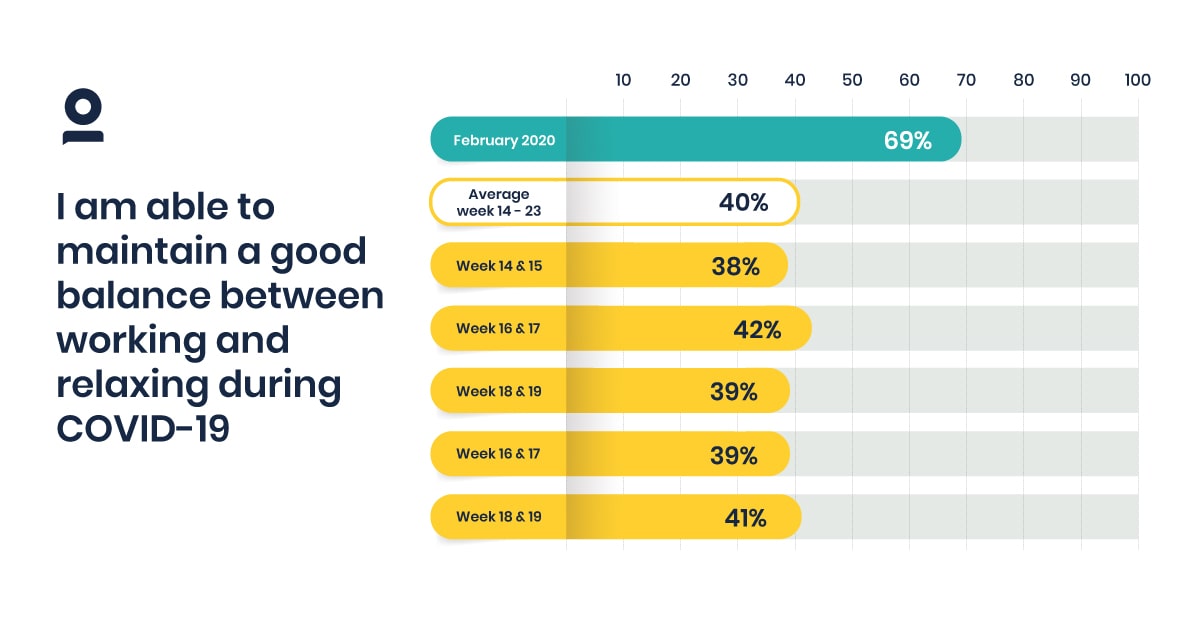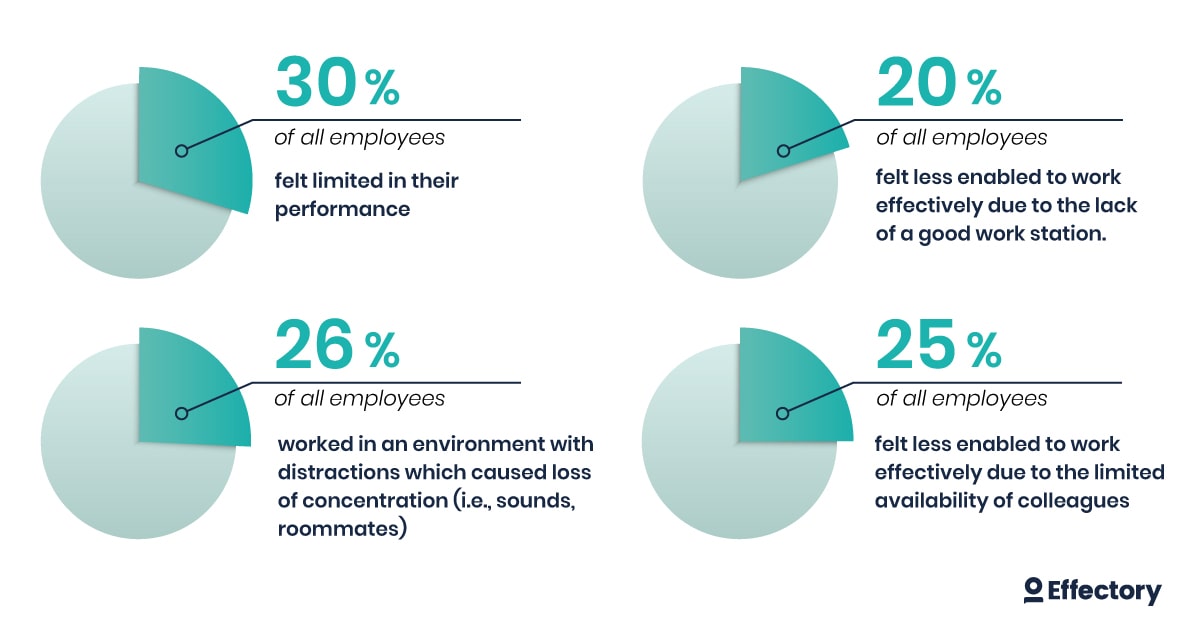During the first wave of coronavirus cases, sixty percent of employees experienced a poor work-life balance, an Effectory study of 123,000 employees across Europe has revealed. Can we expect a wave of burnout cases?
Sixty percent of employees more likely to experience burnout due to coronavirus crisis

What lessons can we learn from employee experiences during the first wave of coronavirus cases? We share the insights provided by the 123,000 employees who responded to Effectory’s COVID-19 Workforce Pulse surveys between late March and early June 2020.
Balance affected most at the start of the coronavirus crisis
On average, 60 percent of employees were unable to maintain a good work-life balance during the first wave of coronavirus cases. This percentage was highest (62%) at the start of the coronavirus crisis and has barely reduced since. Only 40% of employees were able to maintain a good balance. Normally, you would expect this figure to be around 69% on average, so the difference is considerable.

Lack of energy reserves represent a higher risk of burnout
If there is a long-term mismatch between energy reserves and work requirements, the risk of burnout increases. “During the first wave of coronavirus cases, employees had fewer energy resources,” says Effectory’s CPO and Innovation Manager, Merel van der Lei. “For example, some employees did not have the right tools to perform their jobs properly. Collaborating with colleagues was, in many cases, more difficult. And many employees found that their living situations made it difficult to concentrate.”
Timely insight into reduced well-being to predict the likelihood of burnout
COVID-19 Workforce Pulse surveys are a quick way for organizations to gain insight into a number of critical indicators. Van der Lei explains: “Employees automatically given the same seven key questions. Three are about their well-being: Do they have a good work-life balance? Is their workload too high, too low or just right? And can they maintain their current situation in the long term? This last question predicts the likelihood of burnout. Carrying out Pulse surveys regularly can also help organizations to detect trends.”

Open questions are key to prevent burnout during the coronavirus crisis
How can organizations support their employees? Answers to open questions can provide guidance. “Employees who report having a poor work-life balance in a Pulse survey are automatically asked whether the organization can do anything to help them in this regard,” explains Van der Lei.
For example, Effectory carried out a Pulse survey of its own employees and received the following comment: “I would like to stop getting email notifications in the evening.” “There is actually a setting for this in your email program, but not everyone is aware of it. That’s why we provided step-by-step instructions in one of our weekly updates on how to stop getting notifications on your phone in the evenings.”
Pulse surveys also give employees a chance to share their opinions and concerns. “Employees particularly appreciate being listened to when they are overloaded,” says Van der Lei.
Increased intentions to leave due to poor work-life balance
“A high workload has a negative impact on work-life balance,” says Effectory’s Baran Metin, organizational psychologist and People Analytics Researcher. “Research shows that a high workload is associated with a higher risk of burnout and a higher intention to leave the organization among employees (Hu, Schaufeli, Taris, 2011). In order to reduce these risks, it is important for employees to be able recover sufficiently outside of working hours. For employees with an increased risk of burnout, this recovery time is extremely important (Oerlemans & Bakker, 2014).”
Positive work experiences provide protection against the risk of burnout
“If you want to retain talent and maintain a high level of employee performance, then as an organization you need to ensure that the working conditions motivate your employees,” says Metin. “This can be done by giving clear priorities, especially in uncertain situations. It is also important to try to improve the autonomy of employees and increase collaboration between them. In addition, it is important to offer good opportunities for development. The extra motivation that this provides can help to protect your employees against burnout.”
This is one of the reasons why the COVID-19 Workforce Pulse check can be extended to include a set of questions regarding the current needs of employees in terms of professional and personal development. “This module gives organizations the opportunity to provide employees with the training opportunities that are important right now, so that they remain relevant to the organization in the future,” explains Van der Lei.
There is also a module that allows organizations to ask specific questions about employee engagement. “If this becomes too low, the chance of burnout increases,” says Metin.
Six causes of burnout
Burnout is caused by a chronic mismatch between an individual and their work environment in one or more of the areas below (Maslach & Leiter, 1997). Workload is just one of these factors.
- Workload: when employees have a large number of tasks to complete and/or have a lack of skills or experience
- Autonomy: when employees do not have sufficient resources, information or decision-making powers to do their job properly
- Reward: when employees receive too little financial reward, feel that their hard work is being ignored or is not appreciated, or when they do not feel proud of the work they do
- Working atmosphere: when employees lose positive contact with their colleagues. Employees work best when they share joy, pride and humor with other employees that they like and respect. The most damaging thing for the working atmosphere is a chronic conflict or bad relationship with a direct colleague.
- Sense of fairness: when there is inequality between employees, for example, in terms of pay or workload.
Book a free demo. See our solutions in action.
Effectory is Europe’s Leading provider of Employee Listening Solutions. Schedule a product demo and discover how to enhance your employees’ engagement.
Demo request